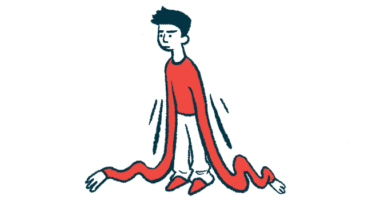Diagnosis Through Newborn Screening Yields Better Outcomes
Along with DMTs, chances of walking increase for SMA children, study finds

Newborn screening for spinal muscular atrophy (SMA), coupled with early access to disease-modifying therapies, can improve the likelihood that children with the disease will be able to walk, a new study suggests.
Also, fewer patients in the newborn screening group tended to require ventilatory or feeding support, compared with those diagnosed after developing symptoms of the disease.
“The research shows the effectiveness of newborn screening for spinal muscular atrophy in the broader population,” Didu (Sandi) Kariyawasam, PhD, said in a press release. Kariyawasam is lead author of the study at Sydney Children’s Hospitals Network (SCHN) in Australia.
The study, “Newborn screening for spinal muscular atrophy in Australia: a non-randomised cohort study,” was published in The Lancet Child & Adolescent Health.
Over the past decade, the landscape of clinical care for SMA has been revolutionized by the approval of multiple treatments that have been proven in clinical trials to slow or even stop the progression of the disease.
Yet, these therapies are generally good at preventing damage, but limited in their ability to reverse damage that’s already happened. That’s why early treatment is key for optimal clinical outcomes.
Newborn screening (NBS) involves testing babies for SMA shortly after birth, allowing a diagnosis in the first weeks of life. Given the importance of early treatment, NBS programs for SMA have become more common in the years since therapies have become available.
“The earlier the diagnosis, the earlier treatment can begin, which is where newborn screening comes in,” Kariyawasam said.
While NBS is becoming increasingly common, there’s limited data directly comparing outcomes for babies diagnosed through NBS, as compared to children diagnosed through traditional clinical evaluation after showing symptoms of the disease.
This type of comparison is important for “building the evidence base that newborn screening is an approach that leads to better health outcomes for children with spinal muscular atrophy and is impactful enough to justify widespread adoption,” said Michelle Farrar, a pediatric neurologist at SCHN and study co-author.
Study design
In this study, researchers assessed outcomes for 15 children who were diagnosed with SMA via NBS in a pilot program in Australia from 2018 to 2020. Outcomes for these children were compared with those of 18 children who were diagnosed with SMA after showing signs of the disease between 2016 and 2018. The comparator group was overall older, including children up to age 16.
In the NBS group, 40% of the babies showed signs of SMA that were apparent within the first weeks of life. Of the 15 babies, 13 started disease-modifying treatment following diagnosis. For one child who did not have symptoms, parents and clinicians elected to perform monitoring rather than starting treatment; that child — who had four SMN2 copies, generally indicating less-severe disease — is still not showing symptoms at age 2.
Another child in the NBS group had SMA and a co-occurring severe blood disorder, and the decision was made to focus care on maximizing comfort given that survival was considered unlikely. In the comparator group, 16 of 18 children (89%) were started on treatment after SMA was diagnosed, while the other two were given care to maximize comfort.
At two years post-diagnosis, all of the children who started on treatment were still alive. One patient in the NBS group needed invasive ventilation to support breathing ability, both at diagnosis and at two-year follow-up. In the comparator group, the number of patients requiring ventilation was three (19%) at diagnosis and six (38%) after two years.
In the NBS group, 11 of the 14 children (79%) could walk, either independently or with assistance. By comparison, only one (6%) of the 16 children in the comparator group could walk. For the majority of children in the comparator group, sitting was the most advanced motor milestone achieved.
Standardized assessments of motor function broadly showed better outcomes in the NBS group after two years, even among babies who had symptoms apparent at birth.
Long-term gains
“These findings emphasise that while having [severe SMA present at birth] might represent a less than normative developmental trajectory for children diagnosed through newborn screening, intervening at the earliest opportunity improves motor function gains over the longer term,” the researchers wrote.
Meanwhile, measures of functional independence were similar in both groups, even though the average age at follow-up was nearly a year older in the comparator group.
“Scores for functional independence assessment were comparable between groups, emphasising that those in the comparator group, despite being older, were as functionally dependent on their caregivers as the 2-year-old children in the newborn screening cohort,” the researchers wrote.
Kariyawasam said this finding “shows that changing the paradigm of diagnosis to being more proactive can improve the lives of children born with spinal muscular atrophy.”
“The burden of care and the morbidity of SMA was drastically lower in the newborn screening group, which has a huge effect on the quality of life for children and their families,” Farrar added.
Overall, the researchers concluded this study shows NBS can help to optimize outcomes for children with SMA, and they called for more widespread adoption of these programs.
“This study helps to build the evidence that newborn screening is an approach that helps achieve better health outcomes for children with SMA and can encourage other countries to adopt it as a standard of care in their country,” Farrar said.








